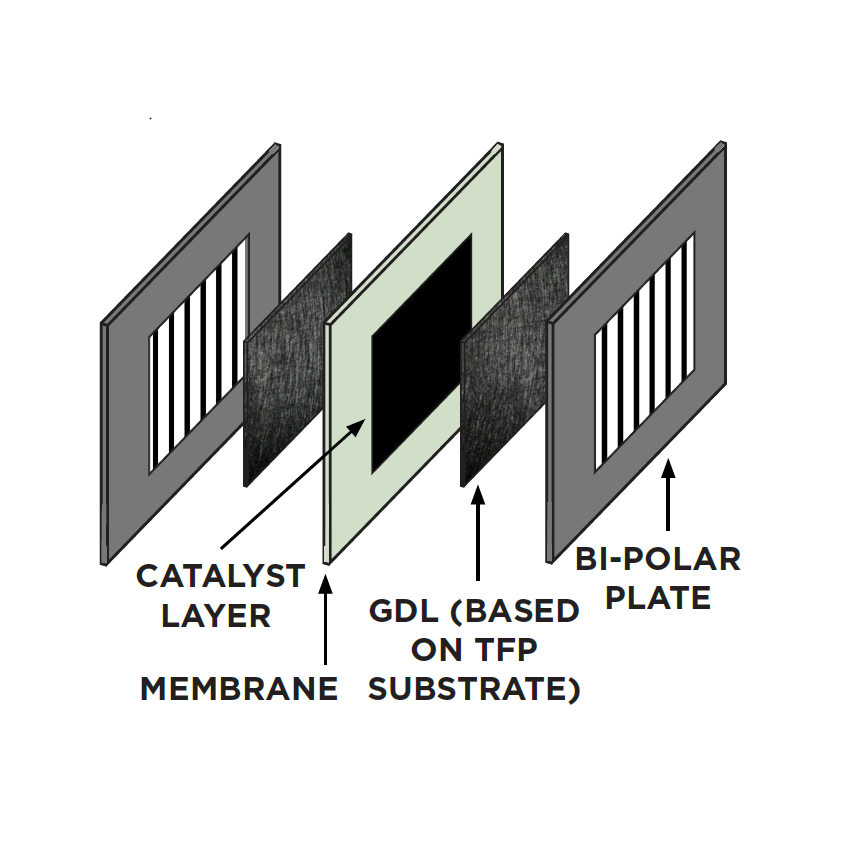TFP's carbon nonwoven is widely utilised as a substrate for the GDL, a critical component of the MEA which is the heart of the fuel cell. The GDL forms the basis of both the anode and cathode, and is responsible for water management, the transport of reactants, electricity and heat, as well as providing structural support to the assembly.
The GDL must be both electrically and thermally conductive to allow current flow, and have a suitable pore structure to optimise mass transport. The structure must also exhibit the correct balance of hydrophobicity, to manage the movement of water and gases in the MEA. This latter property is critical to the efficient operation of the cell; if the GDL is too wet during operation the by-product (water) is not being effectively removed, flooding may occur and reactant gas movement is impeded. Equally, if the GDL is too dry then the membrane will dry out causing higher resistance. In both cases the performance of the cell is reduced.
 The properties of our carbon nonwovens fulfil the performance requirements and material characteristics needed from a GDL substrate and are widely used as such. These attributes include:
The properties of our carbon nonwovens fulfil the performance requirements and material characteristics needed from a GDL substrate and are widely used as such. These attributes include:
- CONTROLLED POROSITY - Our veils are highly porous and the pore structure can be tailored to accommodate different types of carbonaceous filler and post treatments.
- CONDUCTIVITY - TFP's carbon nonwovens have high in-plane & through-plane electrical and thermal conductivity, so effective electrical conduction and heat transfer between the catalyst and the current collector plates can occur.
- CHEMICAL RESISTANCE - TFP's range of carbon mats and veils inherently exhibit good chemical & corrosion resistance to reactant gases.
- HIGH SURFACE AREA - Our materials are highly porous and provide a large surface area. This aids optimum control of reactant gas and water movement during operation, helping to maintain effective mass transport and efficient cell performance.
- DURABILITY - Our nonwovens provide excellent durability & strength. They exhibit controllable and repeatable compressibility. This is important both in stack assembly to accommodate thickness variation in cell stack components, as well as during operation to adapt to the thermal expansion seen in larger fuel cell stacks.
- EVEN SURFACE - The superior even fibre distribution characteristic of our nonwovens provides a suitable architecture for application of a smooth microporous layer coating.
